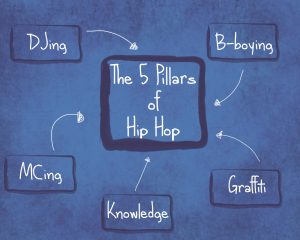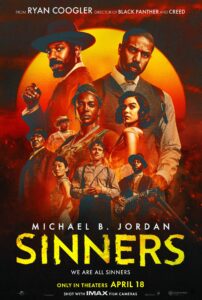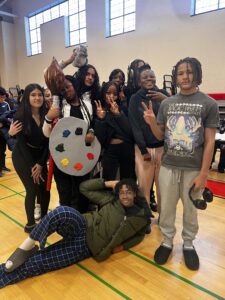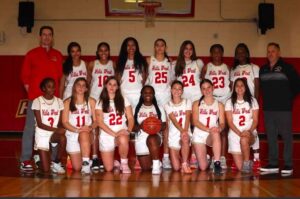Hip-Hop: Pillars That Lead To Power
“How do we teach for change?” asked Ms. Lauren Leigh Kelly, a Hills West English teacher and doctoral candidate in English Education at the Teachers College at Columbia University. Kelly led the 4th Annual Cyphers for Justice Hip-Hop Youth Summit at Columbia, which uses the genre of hip-hop to teach important lessons to high school students about social justice.
“It was a combination of a series of books and people that led me to decide [to create the summit] and that led to me do something, similarly to teaching,” said Kelly, “Hip-Hop is a great way [to teach for change]. It’s a movement, an industry…It’s not just appropriate, but necessary.” During the summit, students attended a critical hip-hop literacy seminar after splitting up into different hip-hop related workshops.

“Man has always wanted to leave a message,” said Kristy Leibowitz, a studio photographer and photojournalist. Leibowitz was one of three workshop leaders at the summit. Graffiti is considered our modern-day cave paintings, a way of leaving behind a piece of oneself. It is also one of the five pillars of hip-hop along with Emcee, Deejay, B Boy/Girl, and Knowledge. Graffiti boomed in the 1980s and represented the artist’s crew or gang; it was also sometimes used for competitions between gangs. Leibowitz led the discussion about graffiti, stating, “[It is] the only art movement in history that only involved kids.”
The influence of youth on society and hip-hop was a hot topic of discussion during the summit. “Young people are the future,” said Dr. Ernest Morrell, a teacher, poet, activist, and writer in many genres, “[Hip-Hop] begins the journey of self-transformation. It is about being a different type of person and creating a different type of world.” Dr. Morrell is the Macy Professor of Education and Director of the Institute for Urban and Minority Education (IUME). He considers hip-hop to be “the most potent social movement” not only because it is “youth initiated by young people for young people,” but because it gives one the opportunity and desire to speak back to power.
“One of my favorite quotes I tell my sons is ‘If you gotta be a monkey, be a gorilla,'” he said. In other words, be powerful in the face of prejudice. According to Dr. Morrell and the NAACP, more than 50% of people behind bars are black and Latino; however, only approximately 15% of those enrolled at Columbia University are black. Hip-Hop, he continued, brings attention to these injustices and critiques and reinforces gender and racial stereotypes, creating a sweeping movement that originally started not too far from Half Hollow Hills.
“What do you do with an entire society that’s been oppressed?” said Dr. Morrell, “Hip-Hop is one of those things that took this space.”
Another item discussed during the summit was who could listen to and perform hip-hop music. Are artists such as Iggy Azalea and Macklemore respecting or appropriating black culture? Dr. Morrell summed up his beliefs nicely:
“Are you upset about the same things Beyoncé and Kendrick Lamar are? That’s hip-hop.”





